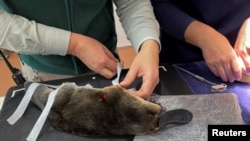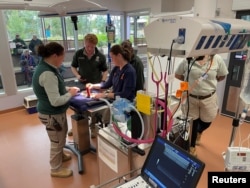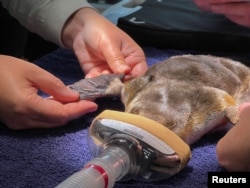The world's largest platypus conservation center has welcomed its first residents as part of a project to protect the semi-aquatic mammal found only in Australia amid threats to its habitat from extreme weather and humans.
The four platypuses — two females and two males — were released over the last two weeks into a custom-built research facility at Taronga Western Plains Zoo in Dubbo, about 400 kilometers (250 miles), northwest of Sydney.
Featuring multi-tiered streams, waterfalls, pools and earth banks for burrowing, the facility will help researchers understand more about the species, Taronga Conservation Society Australia official Phoebe Meagher told Reuters.
"This facility will allow us to not only save the species from the immediate threats of climate change, but also in the long term, be able to repopulate those populations," she said.
"We would love to see some puggles or baby platypus in the facility and understand what led to that reproductive success."
The facility was formed as a partnership between the Taronga Conservation Society Australia, San Diego Zoo Wildlife Alliance, the University of New South Wales, the New South Wales state government and wildlife rescue organization WIRES.
Boasting the bill of a duck, webbed feet and a beaver-like tail, the platypus is unique to Australia. The nocturnal mammals lay eggs and live mostly across the eastern seaboard, from the far north of Queensland to the island state of Tasmania, close to rivers and streams whose beds and banks they forage for food.
Platypus numbers may have more than halved over several decades, research models show, but figures are hard to pinpoint. Environment groups estimate the total population between 30,000 and 300,000.
"Sadly, we're not leaving many places left in the wild for platypus," Meagher said. "So these platypus that we have here ... will really fill those knowledge gaps and allow us to help save this species."



